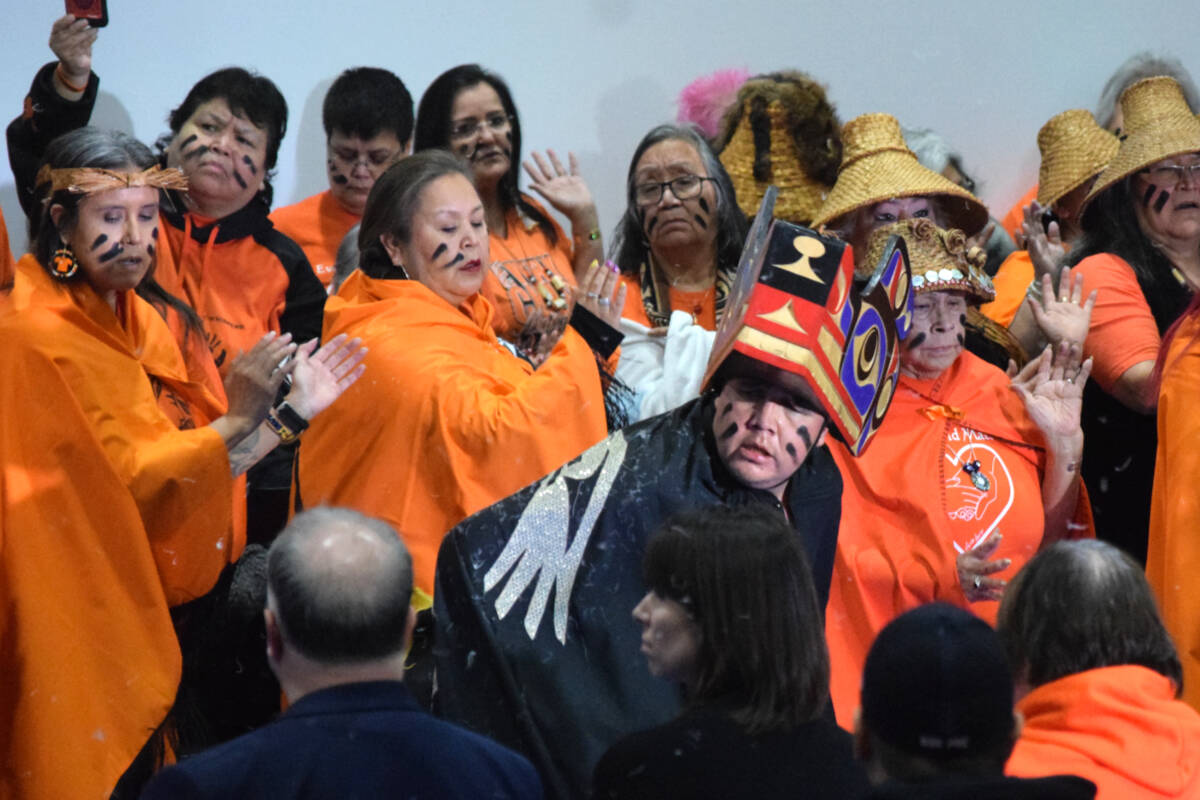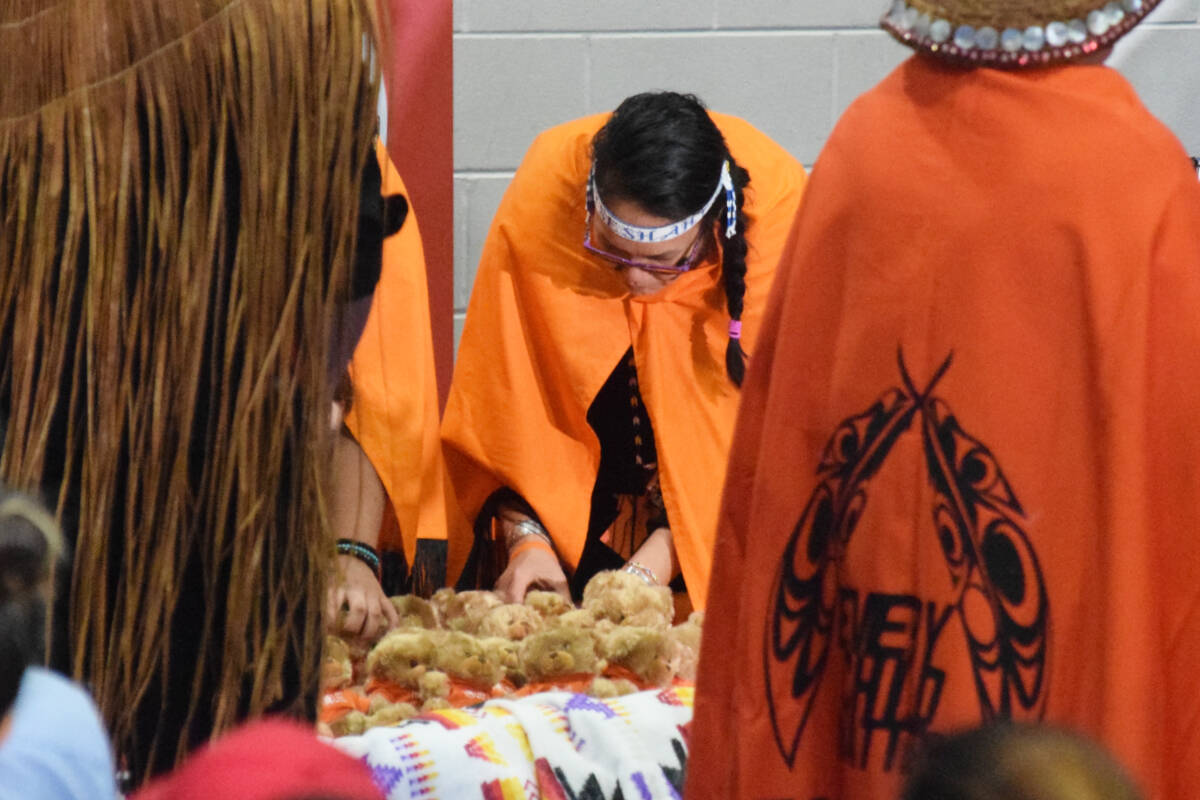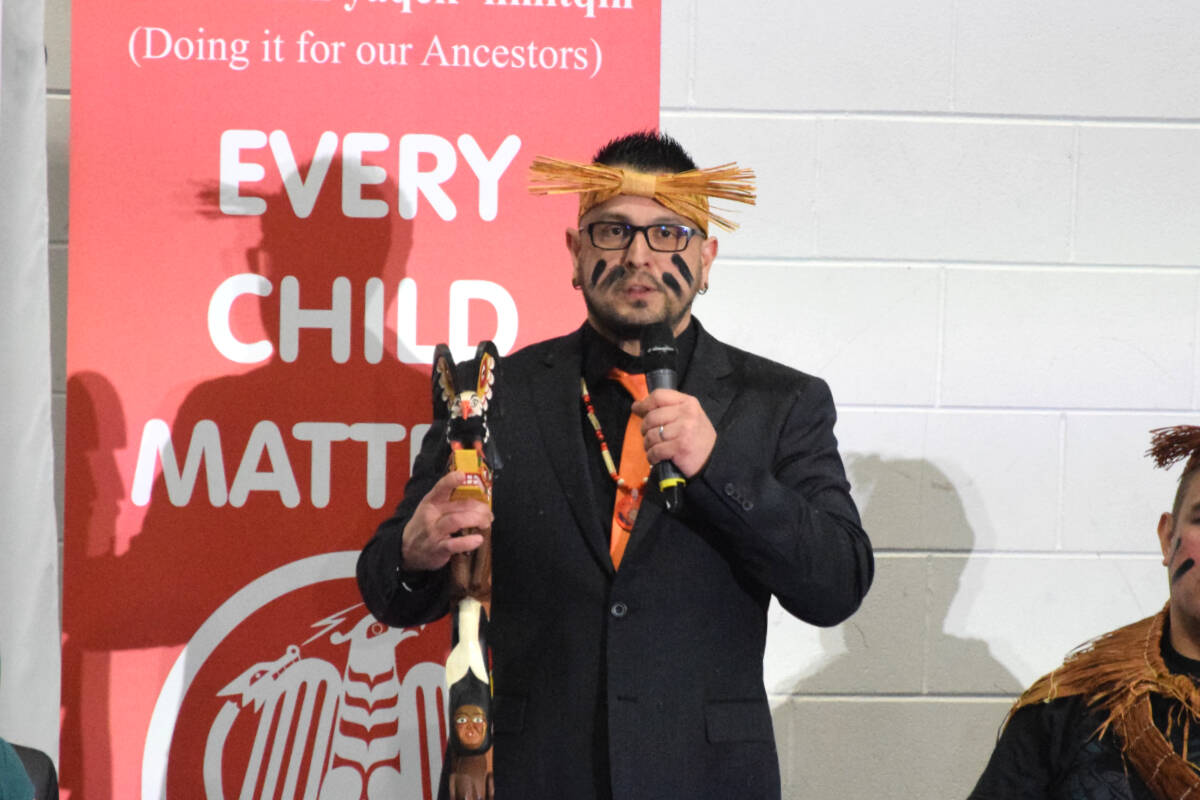Trigger warning: This article contains details about experiences at residential schools in B.C. that may be disturbing to readers.
The team carrying out the sad task of recalculating the death toll at Port Alberni’s former residential school says at least 67 children died while attending the school.
The ?uu?atumin yaqckwiimitqin (Doing it for our Ancestors) team revealed the number — up from the 29 recorded in the official National Centre for Truth and Reconciliation memorial registry — during a press conference on the Alberni Indian Residential School (AIRS) site during the early afternoon of Feb. 21.
The team also revealed that ground scanning has identified an additional 17 suspected burial sites of children who never made it home.
The findings were released to survivors and family members at a private gathering earlier in the day, then released publicly and to media during a gathering at Maht Mahs gym on Tseshaht territory.
The nation undertook scanning of the former AIRS site in July 2022. Brian Whiting of GeoScan explained that the process involved a combination of ground penetrating radar, magnetometry and electromagnetic induction to identify 17 geophysical features or signatures that could represent burials.
Between 10 and 12 percent of the 100 hectares of land to be surveyed was scanned, said Whiting. Much of the land is forested, which makes scanning more difficult. There are also some homes and new development around the area.
“There’s a lot more to do,” he said.
The only way to attain “100 percent accuracy” about the 17 suspected grave sites is through exhumation and excavation, said Whiting. But Tseshaht First Nation Elected Chief Councillor Wahmeesh (Ken Watts) said that this isn’t part of first phase of the project.
“After this, we’ll be engaging with survivors and community members about that,” said Watts. “We’re not at that point yet.”
On top of the ground scanning, the ?uu?atumin yaqckwiimitqin team also undertook months of research and interviews with AIRS survivors. The research team sought to “decolonize” the project, by placing survivors’ lived experience in the foreground as a valued and essential component to the completeness of historical truth.
“Survivors have been continually sharing their truth and not having it be received,” explained Sheri Meding, the research lead for ?uu?atumin yaqckwiimitqin.
Meding said that the “overwhelming” majority of the 67 child deaths were caused by medical conditions, which were exacerbated by the poor conditions of the school.
“Many, many students who attended AIRS were sick,” she said.
There are some gaps in the historical record, because not all of the deaths took place at the school, she added. Some students were discharged home, where they later died, while others were discharged to one of the province’s three Indian hospitals to die.
The school’s poor conditions came to light in 2013, when an article by researcher Dr. Ian Mosby revealed that AIRS had been the site of medical experimentation. But survivors of AIRS also told harrowing stories about young girls who had been impregnated, forced abortions and newborns being disposed of in an incinerator on site. Others told stories about suicide and abuse that were later covered up as “accidents.”
The identities of the 67 dead will not be revealed until Tseshaht has contacted all the families, said Watts. During the ceremony, members of Tseshaht filled up a canoe with 67 stuffed teddy bears, representing the students who died. These teddy bears will be delivered to family members, said Watts.
Children from all over the province attended AIRS, which closed its doors in 1973. This August marks the 50th anniversary of the school’s closure.
The announcement on Tuesday ended with a number of calls to action, including a request for funding from the federal government so the nation can conduct more research and replace the former residential school buildings on its territory with a healing centre. Courtenay-Alberni MP Gord Johns, who attended the event, said that Canada needs to step up and answer the call to action.
“They provided the resources to build these institutions, they need to provide the resources to tear them down and remove them, but also to replace them with healing,” said Johns.
Tseshaht First Nation never asked for the school to be placed on its territory, but community members now have to live with the ghosts of the residential school. Watts described stories of swings moving without any wind, lights turning off and on and the sounds of children playing in an empty gymnasium.
“The things we’re sharing today are the things we’ve been taught as kids,” he said. “We hope survivors feel that the truth they’ve been speaking to us for decades has come to light. We hope they feel a little lighter today.”
Anyone needing support may call the Indian Residential School Survivors Society toll-free at 1-800-721-0066 or 24-hour crisis line at 1-866-925-4419.
RELATED: Tseshaht First Nation to release ground scanning results for former residential school
RELATED: Feds’ hiring of international group to advise on unmarked graves called ‘misstep’
IndigenousPORT ALBERNIresidential schools






